

James Wong
2026 Audi Q5 review: Quick drive
5 Days Ago
The new Renault Arkana gets tweaked looks and added kit with a dash of spirit from the Alpine performance division.
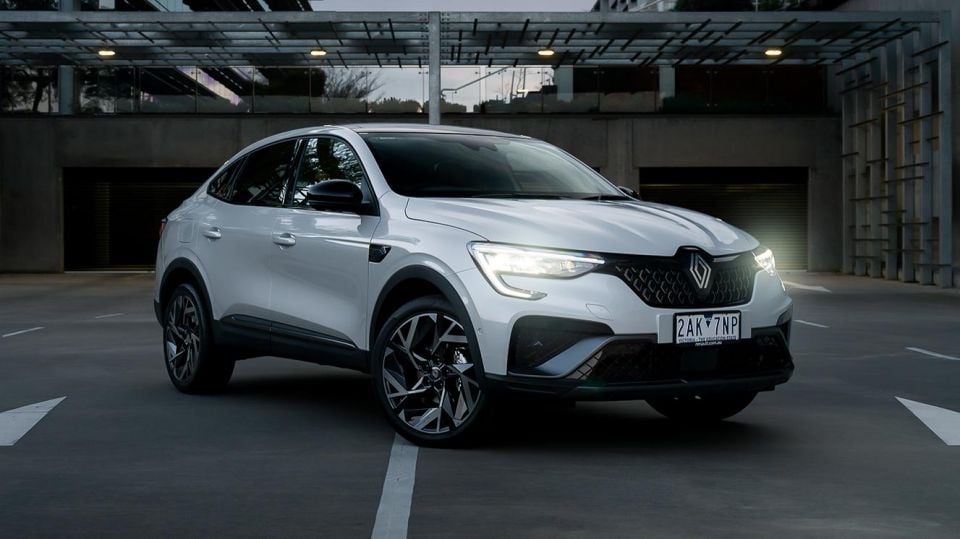
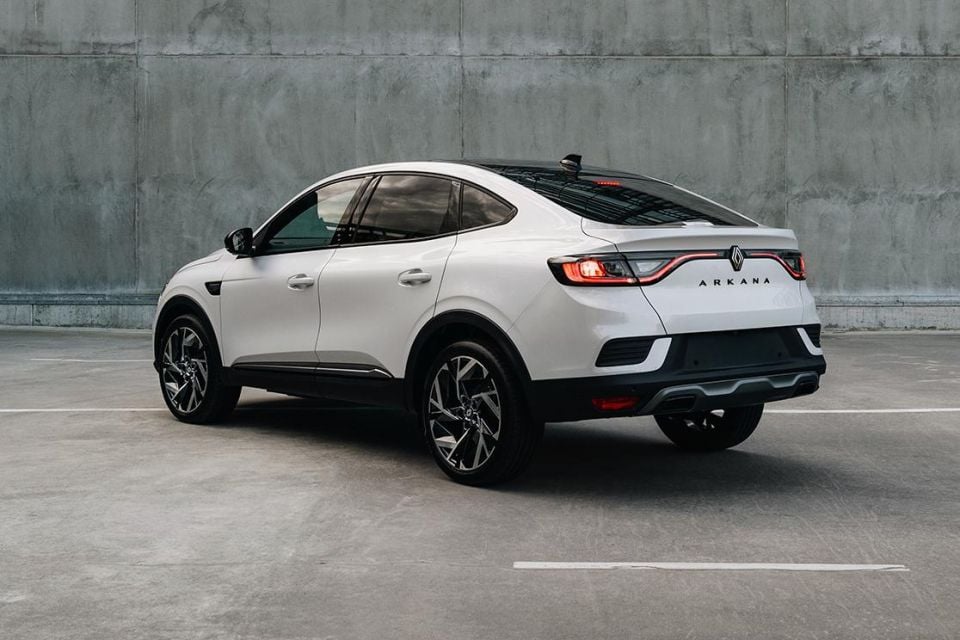

Quickly see how this car stacks up against its competition. Select any benchmark to see more details.
Where expert car reviews meet expert car buying – CarExpert gives you trusted advice, personalised service and real savings on your next new car.
There’s a new Renault Arkana in town – but you might not realise when you first see it.

Renault’s SUV coupe remains a unique option in Australia, as one of just two ‘coupe’ crossovers at this price – the other being the GWM Haval H6 GT.
The facelifted model receives subtle changes and some extra equipment, and the flagship 2025 Renault Arkana Esprit Alpine brings new branding to the outgoing R.S. Line halo in line with a global change.
Drawing upon the Alpine performance brand, the Esprit Alpine nameplate brings sportier trims and finishes in line with the now-defunct R.S. Line, but instead of flashes of yellow there’s more pops of blue.
There’s still no hybrid option, despite Renault Australia indicating last year a more efficient E-Tech Full Hybrid version would “likely” join the local range. Read more on the updated statement here.
Still, Renault has managed to keep prices the same relative to the outgoing model, while adding kit like a surround-view camera, wireless Apple CarPlay and Android Auto, and a lane centring function across the range. The Esprit Alpine on test gains a new Bose-branded premium audio system.
Does the Korean-built French crossover coupe have what it takes to make a bigger splash in Australia? Or, are the changes too minimal to make enough of an impact in such a competitive segment?
Pricing is unchanged over the Intens and R.S. Line grades being replaced. While the mid-spec Techno is the current entry point, a more affordable entry version to replace the Zen is “coming soon”.
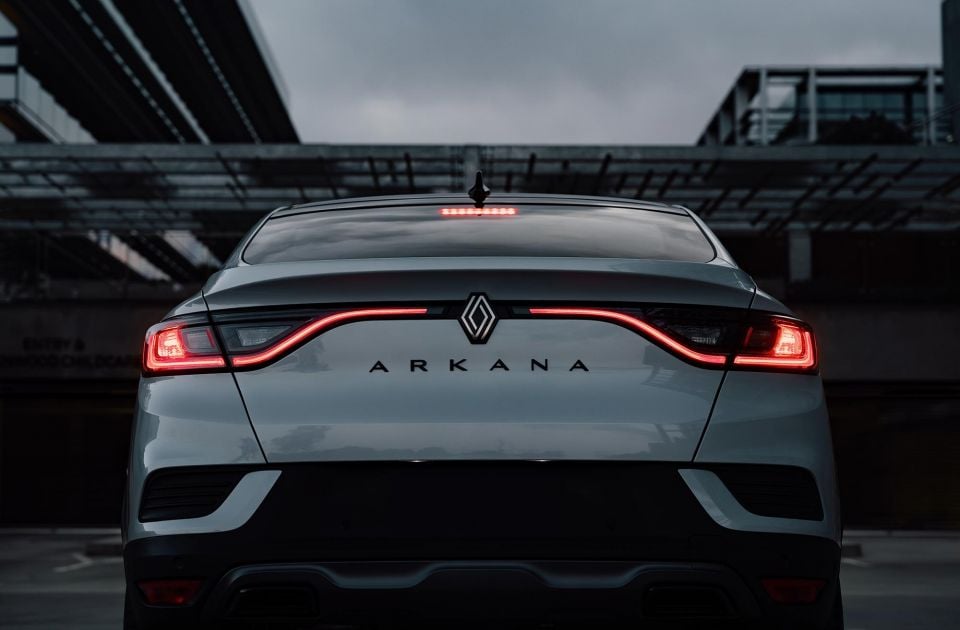
| Model | Price before on-road costs |
|---|---|
| 2025 Renault Arkana Evolution | $TBC |
| 2025 Renault Arkana Techno | $41,000 |
| 2025 Renault Arkana Esprit Alpine | $45,000 |
To see how the Arkana lines up against the competition, check out our comparison tool.
Buy your new car without the stress. It's fast, simple and completely free.

Great service from Travis and team, second time I have used this business would not hesitate to recommend them to anyone
Craig C.
Purchased a Ford Ranger in Sunshine Coast, QLD
CarExpert helped Craig save $7,224 on his Ford Ranger, now let us save you on your next new car.
Get your BEST priceThe Esprit Alpine brings revised trim and equipment, but the basic Arkana experience is very much the same.

If you buy the flagship model you’ll notice details like revised seat trims combining vegan leather with suede inserts, complete with quilted stitching details and blue Alpine logos embroidered in the backrests.
You get nice stitching details on the steering wheel too, as well as the door inserts, both of which score a fetching tricolore stitch pattern in the colours of the French flag.
There’s a new ‘slate’ dashboard insert that appears to mimic marbled carbon-fibre, but get too close and you realise it’s just a rough plastic panel which actually feels a bit cheap. This pattern is applied to the doors, too.
Apart from that everything feels reasonably well built like the pre-update version, with soft-touch surfaces atop the dash and doors as well as that swish ‘floating’ centre console design incorporating a conventional gearshift.
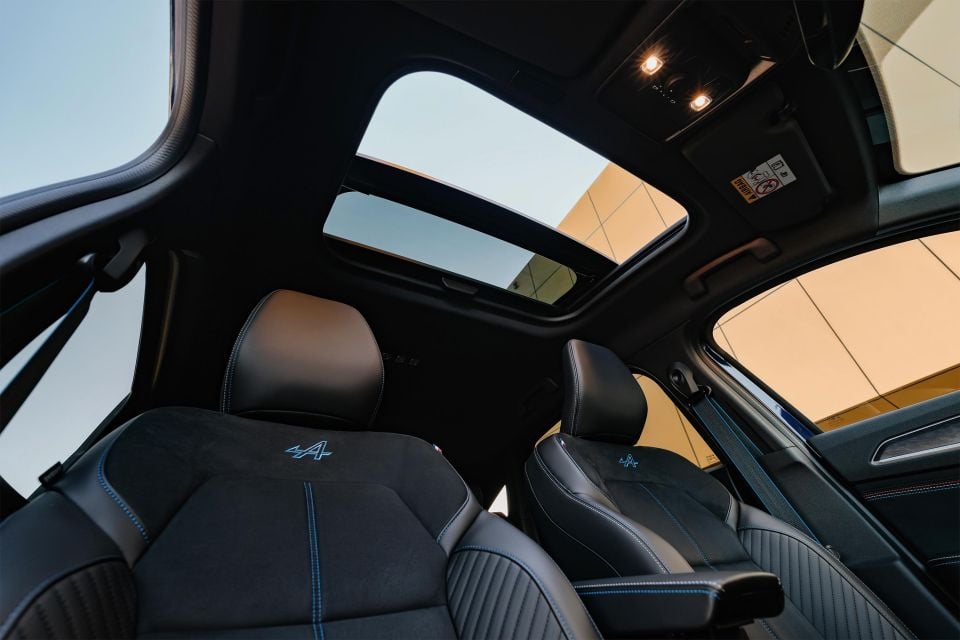
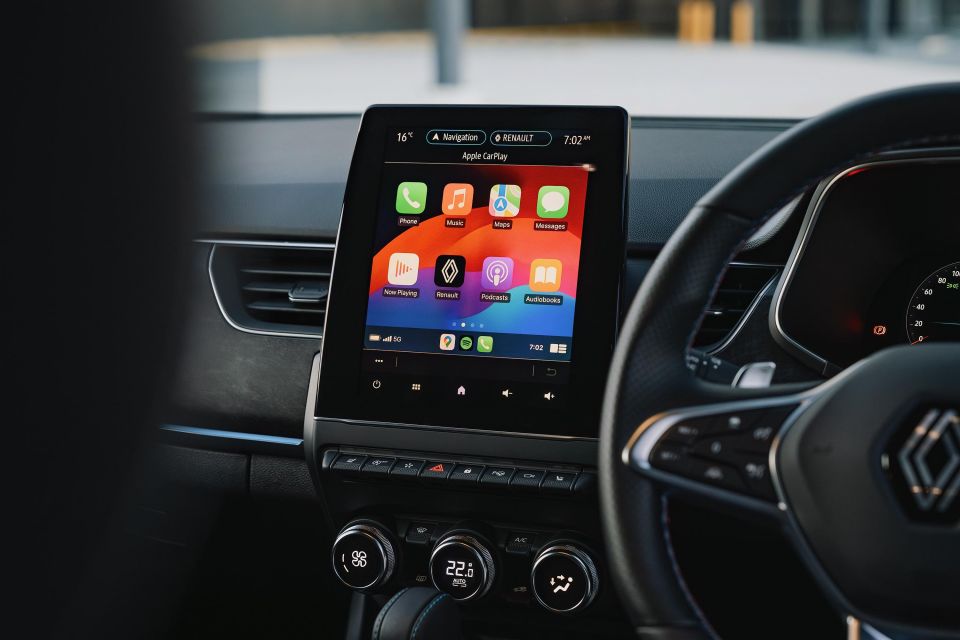
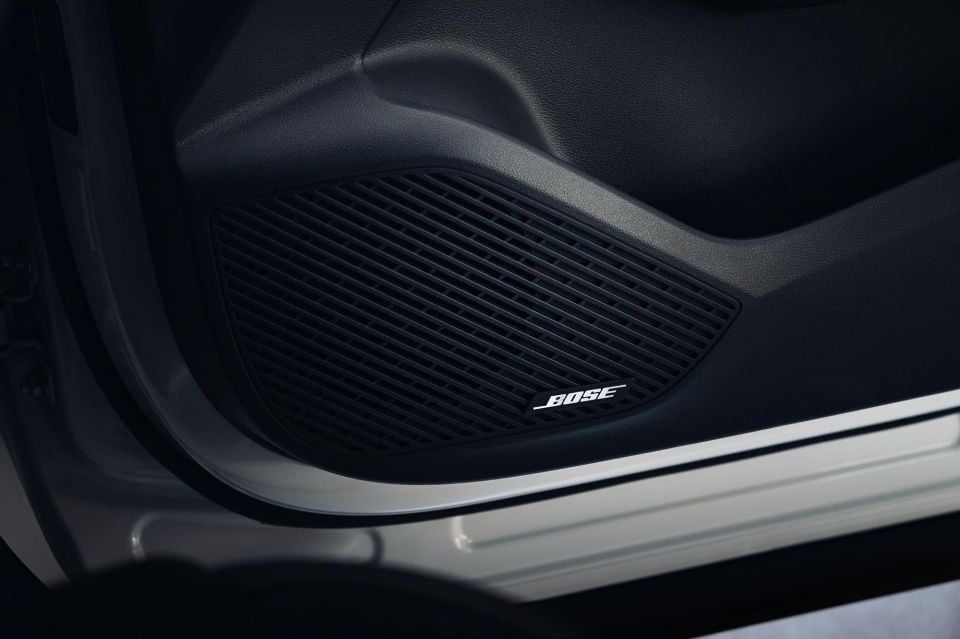
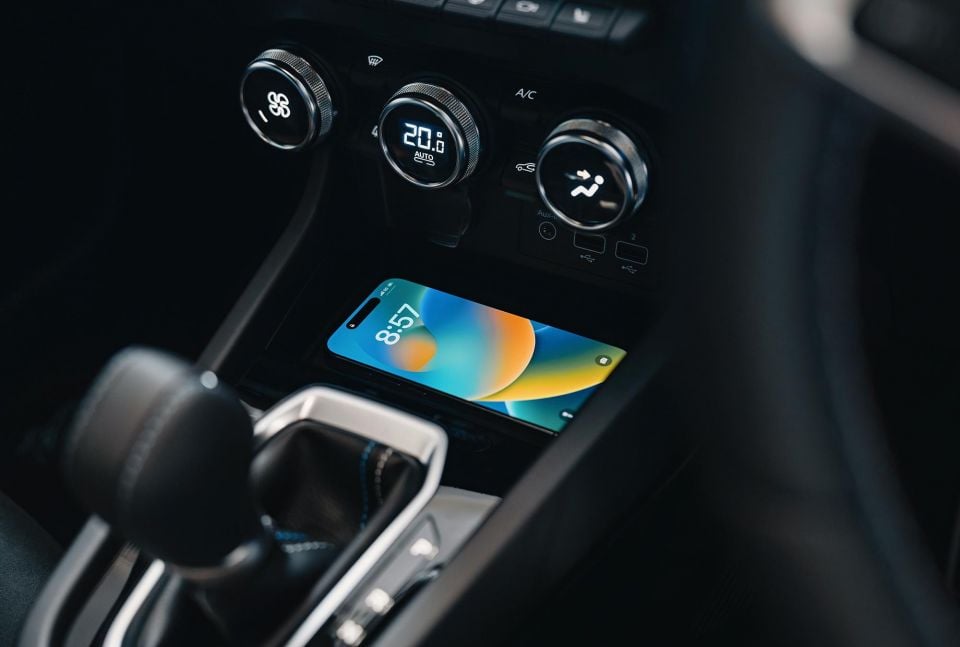
Up front you get electrically adjustable chairs with powered lumbar for the driver. It’s not necessarily common for the passenger seat to be powered in the compact class… but oddly there’s no base cushion angle adjustment for the driver.
Both front seats are heated for both the Techno and Esprit Alpine, and the perforated leather steering wheel is heated on the Esprit Alpine.
All models at launch score a 10.25-inch digital instrument cluster and a 9.3-inch portrait-oriented infotainment touchscreen shared with the outgoing model. The older R-Link software offers nice graphics but slower refresh rates than many rivals, though the hard button shortcuts and display options are good.
For the facelift, the infotainment system scores wireless Apple CarPlay and Android Auto, bolstered by a wireless smartphone charger to keep your device juiced. There’s also native navigation if you prefer embedded systems, and DAB radio features.
The Bose-branded eight-speaker premium audio system in the Esprit Alpine doesn’t set the benchmark but offers good sound quality, and thanks to the relatively well insulated cabin (more on that in the driving section) you’ll be able to enjoy your favourite beats without having to compete with road noise on trips out of town.
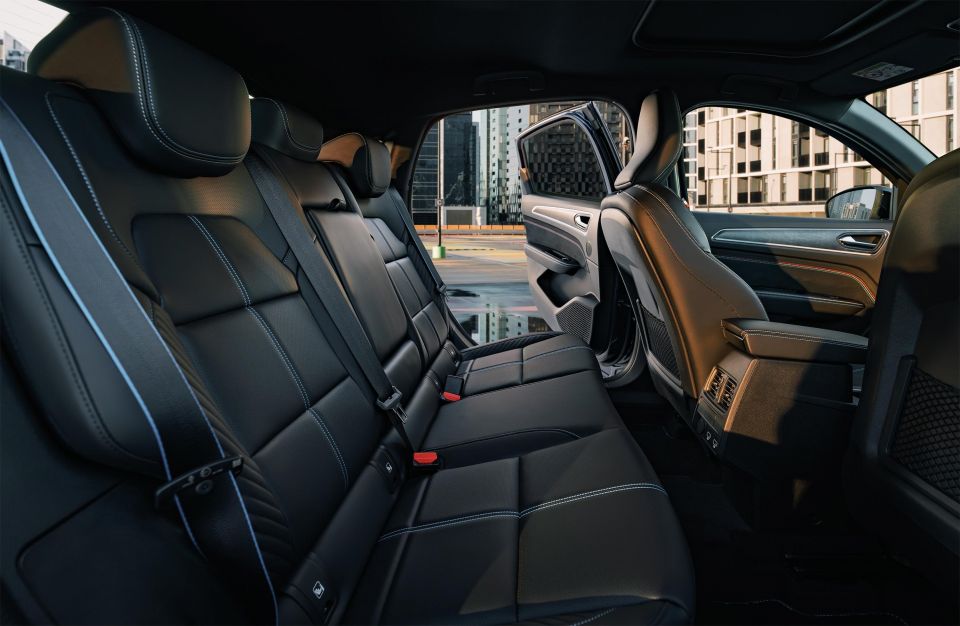
Despite the coupe-style roofline the Arkana offers surprisingly good space in the rear, with head- and legroom pretty decent for an adult measuring around six feet tall.
If you have longer legs you might have tight knee room behind a taller driver, but there are scalloped out sections in the seatbacks to give you more space and, as I noted earlier, you have heaps of headroom even with the sunroof.
Two adults should be fine back there but this won’t be giving a Kia Seltos any sleepless nights. There are nice inclusions like directional rear air vents, map pockets behind both front seats, and a fold-down centre armrest with cupholders.
Carrying kids? ISOFIX on the outboard seats and top tether points across all three rear seats have you covered, and door bins with bottle holders round out the rear amenities. It’s not ‘palatial’, but in the small segment it’s far from the worst in class.
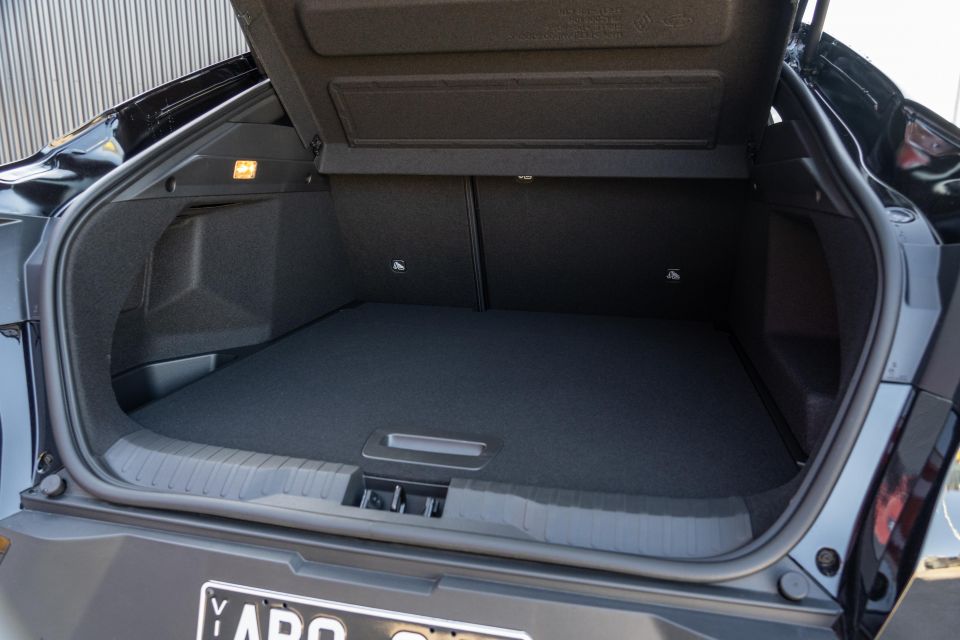

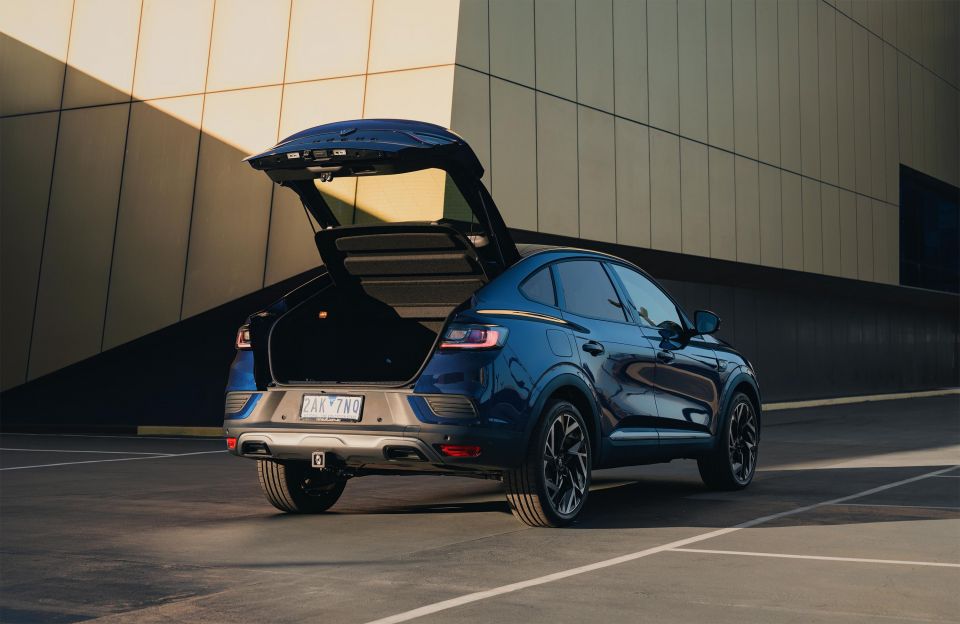
The boot hasn’t been too compromised by the sloping (manually operated) hatchback tailgate either, with Renault quoting 485 litres with the rear seats upright, expanding to 1268 litres with the second row folded.
A split-level boot floor allows you to create an underfloor compartment to hide things away, and there’s a space saver spare wheel lower down.
| Dimensions | Renault Arkana |
|---|---|
| Length | 4568mm |
| Width | 1821mm – excl. mirrors |
| Height | 1571mm |
| Wheelbase | 2720mm |
| Cargo capacity | 485 litres – 5 seats 1268 litres – 2 seats |
To see how the Arkana lines up against the competition, check out our comparison tool.
The updated Arkana lineup in Australia features a carryover drivetrain.
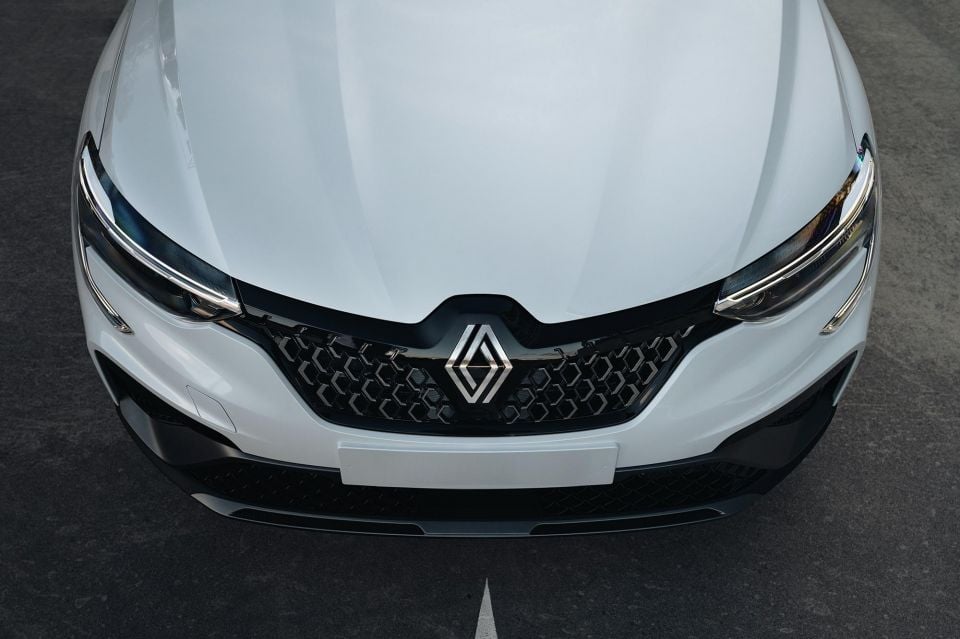
| Specifications | Renault Arkana |
|---|---|
| Engine | 1.3L 4cyl turbo-petrol |
| Power | 115kW @ 5500rpm |
| Torque | 262Nm @ 2250rpm |
| Transmission | 7-speed DCT |
| Driven wheels | Front |
| Weight | 1349kg (kerb) |
| 0-100km/h (claimed) | 9.1 seconds |
| Top speed (claimed) | 205km/h |
| Fuel economy (claimed) | 5.9L/100km |
| Fuel economy (as tested) | 7.1L/100km |
| Fuel tank capacity | 50 litres |
| Fuel requirement | 91 RON |
| CO2 emissions | 133g/km |
| Emissions standard | Euro 6 |
| Braked tow capacity | 900kg |
| Towball download | 75kg |
To see how the Arkana lines up against the competition, check out our comparison tool.
Given the drivetrain is carryover, the Arkana’s on-road experience is more of the same.

Our launch drive took us from the Orange Airport in regional New South Wales through the surrounding area, which meant a lot of high-speed and winding B-roads.
While I imagine most Arkanas will spend their time in the suburbs, the more touring-focused program meant we got a good grasp on how this crossover coupe will manage the long drives so many Australians do regularly.
As I’ve noted in previous reviews of the Captur, the Arkana offers decent performance and drivability once you’re moving. But, the seven-speed dual-clutch transmission remains a sticking point when getting off the line.
There’s a lazy, slightly nervous response on takeoff which takes some getting used to, and on occasion planning. It’s as if the control unit is a novice driver still getting a hang of engaging a clutch in a manual – it’s a bit off-putting, really.
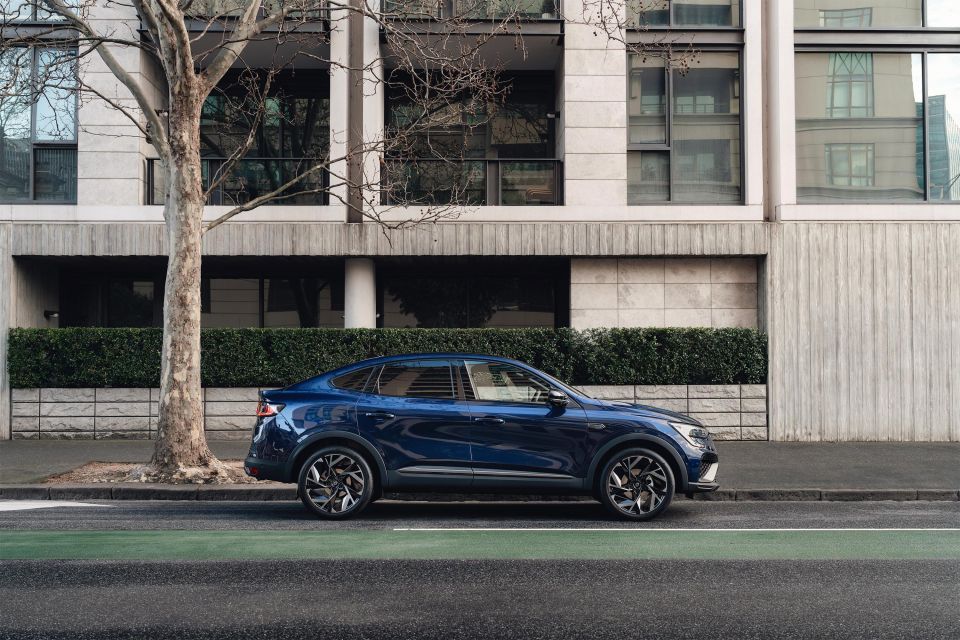
After the quirks of that takeoff, the Arkana’s 262Nm of torque from 2250rpm proves quite handy at getting this relatively light 1349kg crossover moving at decent clip.
There’s a nice, raspy engine note under acceleration, too. Renault’s 0-100km/h claim of 9.1 seconds seems modest, but obviously accounts for the doughy initial response off the line.
The DCT is also fairly snappy once you’re moving, and if you want better response you can either flick into Sport mode which sees it hold gears longer and keep you in the sweet spot; otherwise you can use the steering-mounted paddle shifters and change cogs yourself.
Despite riding on 19-inch alloy wheels and low-profile 225/45 tyres, the Esprit Alpine offers a surprisingly well-sorted ride that’s typically European taut but offers good isolation from bumps. While there is a firmness, there’s minimal jarring or crashing even over some gnarly potholes.
That translates to handling that’s accurate and responsive enough without being overtly ‘sporty’. It feels pretty nimble and feel through the steering wheel is decent, while the body is well controlled through corners and there’s good amounts of grip.
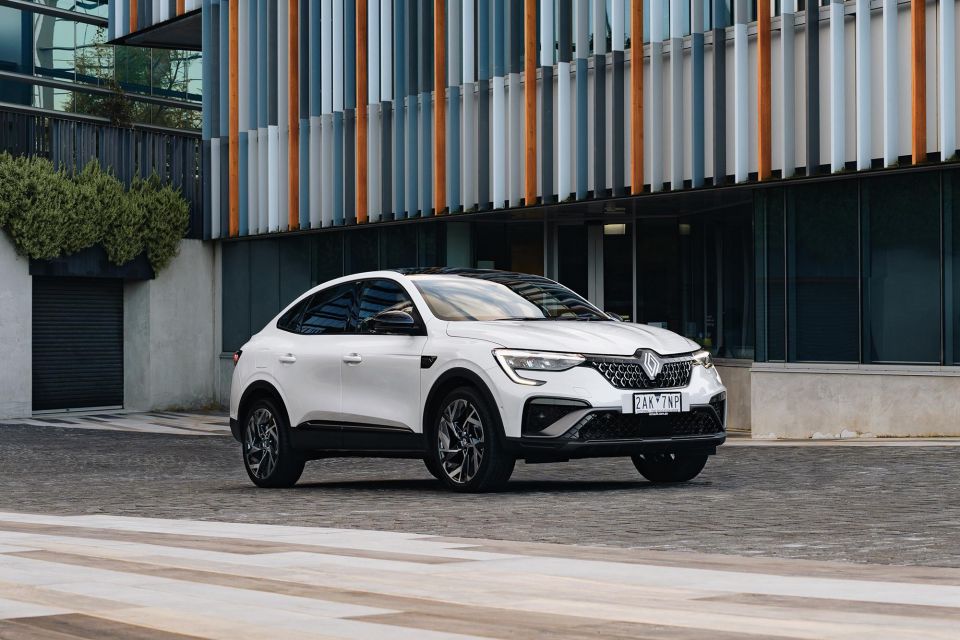
Road and wind noise is also surprisingly well suppressed in our experience, with coarse chip roads only bringing a muted hum into the cabin. I was able to maintain a normal conversation with my co-driver which is uncommon for mainstream compact-class SUVs.
Part of the Arkana facelift’s upgrades is the driver assistance suite, which now brings active lane centring in addition to lane departure warning and lane keep assist. The nature of the roads we drove didn’t allow us to test it properly, but our experience with the related Captur points to it being one of the better offerings in market.
While it still needs improvement in some areas, the Arkana does punch above its weight in others, and once you’re moving offers a pretty refined and capable drive that will be enjoyable even once you travel beyond city limits.
Two grades are available at launch – the Techno and Esprit Alpine.
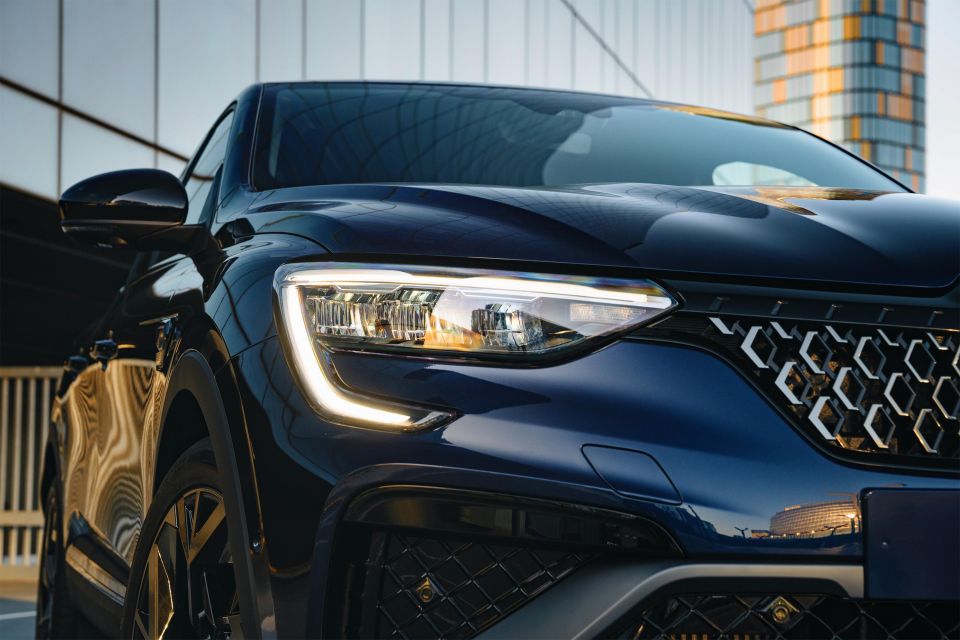
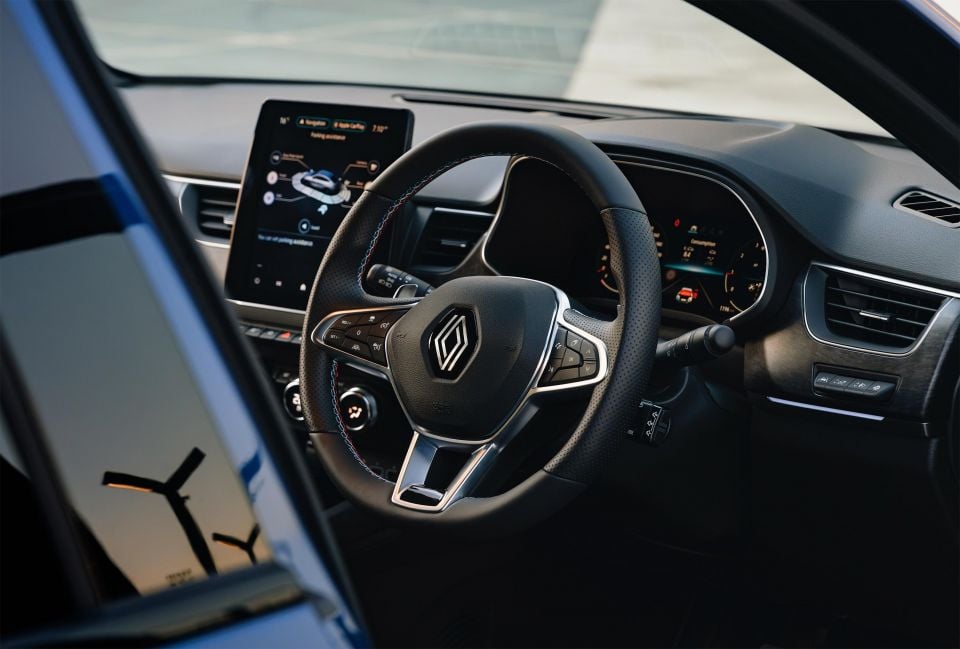


Arkana Techno standard equipment:
Arkana Esprit Alpine adds:
A sunroof is a $1500 option on the Techno.
The Arkana has a five-star ANCAP safety rating based on testing conducted in 2019 on the related Captur.
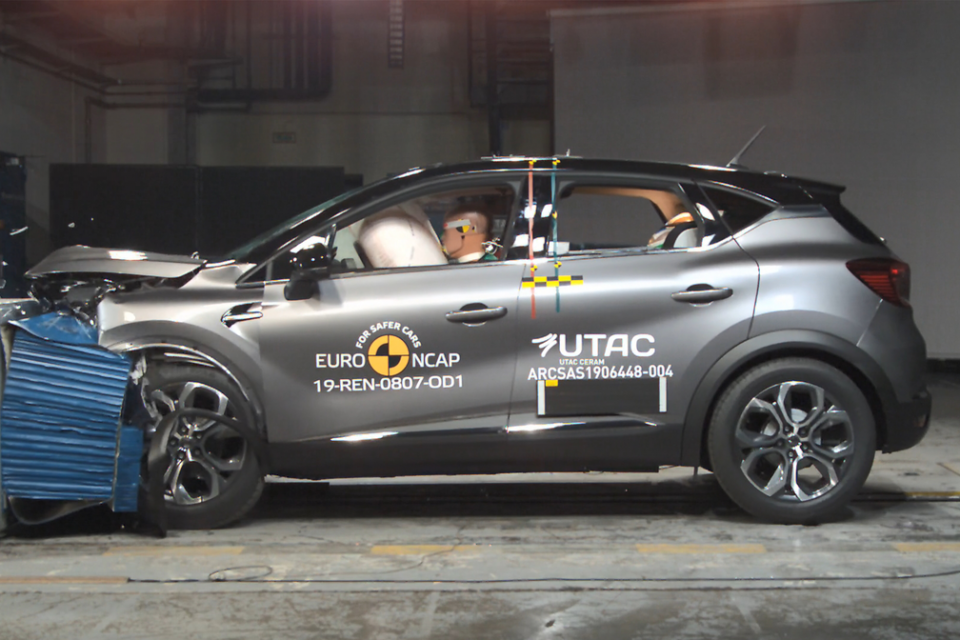
| Category | Score |
|---|---|
| Adult occupant protection | 96 per cent (36.8 out of 38) |
| Child occupant protection | 85 per cent (42.0 out of 49) |
| Vulnerable road user protection | 75 per cent (36.1 out of 48) |
| Safety assist | 72 per cent (9.4 out of 13) |
Standard safety equipment includes:
The Arkana is covered by Renault’s five-year, unlimited-kilometre warranty in Australia.

Where expert car reviews meet expert car buying – CarExpert gives you trusted advice, personalised service and real savings on your next new car.
| Running costs | Renault Arkana |
|---|---|
| Warranty | 5 years, unlimited kilometres |
| Roadside assistance | 5 years |
| Service intervals | 12 months or 30,000 kilometres |
| Capped price servicing | 5 years |
| Total capped price service cost | $2385 |
Buy your new car without the stress. It's fast, simple and completely free.

Great service from Travis and team, second time I have used this business would not hesitate to recommend them to anyone
Craig C.
Purchased a Ford Ranger in Sunshine Coast, QLD
CarExpert helped Craig save $7,224 on his Ford Ranger, now let us save you on your next new car.
Get your BEST priceThe updated Arkana is very much a case of ‘same same, but [not much] different’.
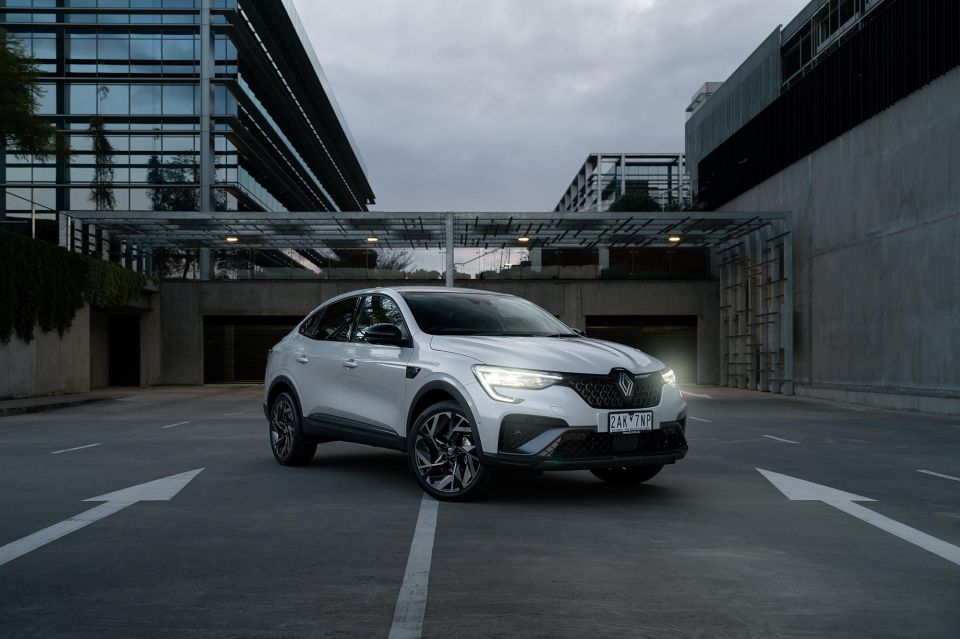
That comes with some good and some not-so good. The Arkana brings the sort of styling you’d pay two or three times more for from established luxury brands, and drives pretty well once you get it moving.
It offers a strong list of standard kit in both mid- and flagship grades without asking for more money than before, and you’re covered by a decent aftersales program should you be a little unsure about going French.
But, there are still a number of areas for improvement.
The seven-speed DCT is snappy once you’re moving, but has a hesitant, elastic fell off the line which some will find nervous or unresponsive in scenarios where you need to make a quick getaway, and the lack of a hybrid option is disappointing.

The Esprit Alpine’s new ‘slate’ dashboard and door decor looks a bit naff if we’re honest; and while the addition of a surround camera system is welcome, the quality and resolution of the vision is lacking compared to most other vehicles offering similar features.
Renault Australia seems confident the Arkana’s value proposition should be able to see the facelift retain its circa-1.0 per cent share of the small SUV segment, though something tells me if the E-Tech Full Hybrid was available it could aim a little higher.
It’s no secret hunger Down Under for electrified SUVs and crossovers is growing, so it seems like an oversight by Renault to bypass a hybrid Arkana in the current landscape – with emissions regulations coming into effect in 2025.
If you’re persuaded by the looks alone, the Arkana is a cool and left-field offering that in the right colour looks quite fetching. I’d just recommend if you’re looking to buy one, just take it for a test drive on roads with traffic lights or stop-start manoeuvres so you can get a feel for the transmission’s low-speed behaviour.
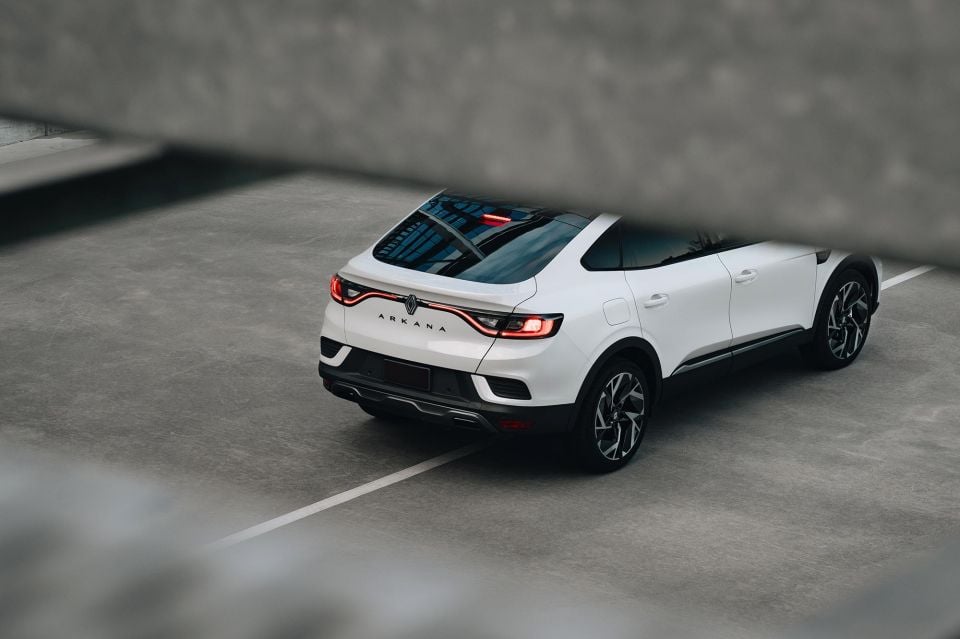
Click the images for the full gallery
MORE: Buy a Renault Arkana MORE: Everything Renault Arkana
Where expert car reviews meet expert car buying – CarExpert gives you trusted advice, personalised service and real savings on your next new car.
James is an automotive journalist based in Melbourne, Australia. Before joining CarExpert.com.au in 2020, James has worked at leading auto media outlets including Carsales and CarAdvice, as well as at Pulse agency for Ford Australia's communications team. In 2019 James made Mumbrella's 'Top 20 most prolific web authors in Australia' list after publishing 1,360 articles between March 1, 2018 and February 28, 2019 for CarAdvice. James is also an Ambassador for Drive Against Depression – an Australian charity whose mission is to support mental wellness through the freedom of driving and a shared love of cars.


James Wong
5 Days Ago


James Wong
5 Days Ago


Max Davies
4 Days Ago


Josh Nevett
2 Days Ago


Max Davies
2 Days Ago
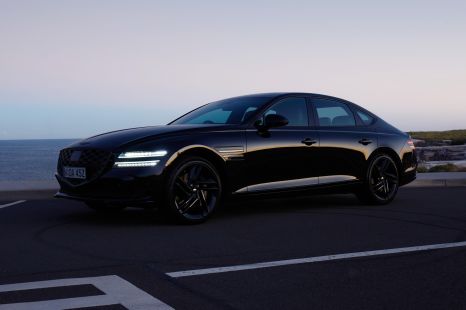

William Stopford
1 Day Ago